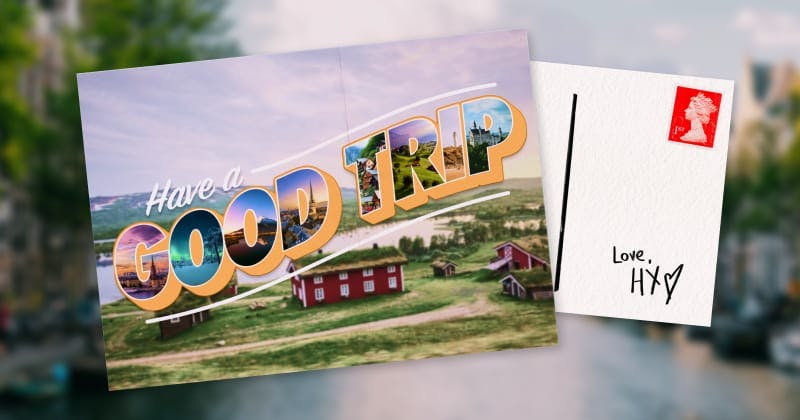
Georgia Travel Guide
Our ultimate Georgia travel guide. Discover the rich history, vibrant culture, and stunning architecture of the jewel of the Caucasus.
What you'll find in this guide:
Top things to do in Georgia
Some facts about Georgia
Practical info
Getting to Georgia
Getting around Georgia
Where to go in Tbilisi
Georgia's best activities
What to eat in Georgia
GMT+4
Georgian Lari
Georgian
Type C and Type F
4 hours 30 minutes
Some facts about Georgia
At the crossroads of Eastern Europe and Western Asia, Georgia's a unique blend of old-world charm and modern vibrancy. The country's bordered by the Black Sea to the west, providing stunning coastlines, and is home to some of the oldest wine-producing regions in the world. Georgians pride themselves on their wine – with over 8,000 years of viticulture history, it's an integral part of the country's soul.
Georgia's rich history stretches back millennia, with its statehood dating back to the 11th century BC. But the modern state of Georgia emerged in 1991 following the dissolution of the Soviet Union, marking the start of a new era of independence and cultural revival. Visitors coming to Georgia to see an ex-Soviet capital could be disappointed though – the country's keen to show off its thousands of years of history, and guides tend to gloss over the Soviet era as little more than another momentary interruption.
The capital Tbilisi is known for its diverse architecture and maze-like, cobblestone streets. The city is divided by the Mtkvari River and is famed for its warm sulphur baths, a tradition dating back to the city's origins. Overlooking Tbilisi is the Narikala Fortress, an ancient symbol of Tbilisi's defense, offering panoramic views of the cityscape.

Practical Info
Culture and etiquette
Religion
Georgian Orthodox Christianity is the predominant religion, with deep cultural and historical significance to the Georgian people. Orthodox Christianity is very much a living religion in Georgia, an active part of most people's lives, and the Patriarch, head of the Georgian church, is greatly revered for restoring the faith after the fall of the Soviet Union. A small minority of the population practices Islam and other faiths.
Tipping
Tipping is appreciated for good service in restaurants and taxis, usually around 10%. However, it's not always expected in more rural or traditional establishments.
Smoking
You can't smoke in public places, including bars, restaurants and public transport, but there are designated smoking areas.
Jabs, visas and other advice
For up-to-date advice on vaccinations, visas, and other travel advice, we recommend checking the government's website.
Emergency numbers
112 for all emergencies.
Getting to Georgia
Tbilisi is well-connected by air, with direct flights from the UK starting in May 2024. Tbilisi International Airport (TBS) is about 17 kilometres southeast of the city centre, and the journey from the airport to the city centre is relatively quick, taking about 20 to 30 minutes depending on traffic.
Getting around Georgia
Heading to Tbilisi? Once you've arrived and are ready to explore, you'll find plenty of convenient and affordable options to get around the city. Tbilisi boasts a well-organised public transport system, alongside other services that make it easy to navigate the city's vibrant streets and discover its hidden gems.
By Metro
Tbilisi's Metro system is one of the most efficient ways to get around the city. Its two lines cover most key areas, including the historic Old Town, modern city centre, and several residential districts. The Metro runs from 6am to midnight, and tickets are very affordable. You can buy a Metromoney card, which can be topped up for multiple rides, from any station.
By bus and minibus (Marshrutka)
Buses and minibuses, locally known as Marshrutkas, are the backbone of Tbilisi's public transport. They offer more extensive coverage than the Metro, reaching virtually every part of the city and its outskirts. Buses have fixed routes and stops, while Marshrutkas are more flexible, often stopping on demand. Both are very cost-effective, though Marshrutkas can be a bit more challenging for first-time visitors due to their lack of fixed stops.
By taxi and ride-hailing apps
At time of writing the FCDO advises against hailing taxis in the street. We last visited in early 2024 and found Bolt was everywhere – just download the Bolt app as soon as you arrive and use it to book a taxi whenever you need one.
On foot
Exploring Tbilisi on foot is not only feasible but also highly recommended, especially in the city centre and Old Town areas. Many of Tbilisi's attractions are in walking distance of each other, and strolling through its streets means you can appreciate the city's unique architectural styles, bustling markets, and lively atmosphere. Pedestrian-friendly zones, like Rustaveli Avenue and the newly renovated Agmashenebeli Avenue, are perfect for leisurely walks.
Outside the capital
It's easy to join an organised tour from Tbilisi to any of the major tourist destinations. You can hire a car and drive legally in Georgia for up to a year on a UK license, but the drink-driving limits are lower than in the UK so as well as taking the usual care to only drive safely, be aware that you may be over the limit in Georgia even if you wouldn't have been at home.

Where to go in Tbilisi
Knowing your way around is key to exploring Tbilisi's rich tapestry of history, culture, and modern vibrancy. The city's divided by the Mtkvari River, which flows from the northeast to the southwest. Historically, the city didn't have a pronounced class divide across the river, but it has evolved into a mosaic of distinct districts each offering a unique glimpse into the city's soul.
Old Town
For a journey back in time, the Old Town is where history lives and breathes. It's the most ancient part of Tbilisi, where you'll find the Narikala Fortress, the Sulphur Baths, and the Sioni Cathedral. As you wander through its narrow, winding streets, you'll be captivated by the balconied houses and historical roads like Shardeni Street and Erekle II Street, offering insights into Georgian heritage.
Avlabari District
Avlabari on the east bank of the Mtkvari River presents a mix of historic and modern Georgia. Here stands the grand Holy Trinity Cathedral, one of the largest Orthodox cathedrals in the world. The area also offers a glimpse into the diverse cultural fabric of Tbilisi, with its Armenian churches and the stunning views of the city from the Metekhi Church.
Mtatsminda District
Overlooking Tbilisi, the Mtatsminda District is home to Mtatsminda Park and the iconic Tbilisi TV Tower. This area combines natural beauty with entertainment, with funicular rides to the park where you can enjoy panoramic views of the city. It's also the site of the historic Mamadaviti Church, named after Saint David Gareja.
Vake and Saburtalo Districts
For those interested in Tbilisi's contemporary scene, the Vake and Saburtalo districts showcase the modern, bustling life of the city. Vake is known for its chic cafés, boutiques, and Vake Park, one of the largest public green spaces in Tbilisi. Saburtalo is a vibrant residential and business area, reflecting the city's growth and development.
Fabrika Zone
Emerging as Tbilisi's cultural and social hub, the Fabrika Zone is a converted Soviet-era sewing factory now hosting a creative space filled with cafés, bars, studios, and hostels. It's the go-to place for artists, travellers, and locals looking for a lively, eclectic atmosphere.

Georgia ranks 55th on the Good Trip Index
This score is calculated based on Sustainability, Human Rights, Women's Rights, Press Freedom, Quality of Life, LGBTQI+ Rights and Animal welfare
Find out moreGeorgia's best activities
Balloon ride over Tbilisi
Start your Georgian adventure in Tbilisi, and head for the tethered hot-air balloon in Rike Park. The trip up and down takes 15 minutes and gives you a great introduction to layout of the city, the castle, cathedral and surrounding hills.

Walking tour of Tbilisi Old Town
Next, take a guided walking tour of the Old Town. You'll see the famous sulphur baths that are the heart of the capital, the beautiful underground Meidan Bazar market, any number of churches and towers and, rather wonderfully for the centre of a capital city, waterfalls.

Joseph Stalin Museum, Gori
Georgia doesn't shy away from Joseph Stalin's legacy, but the country's Soviet past and most infamous figure can sometimes feel somewhat tucked away. Head up to Gori, Stalin's birthplace, to find out more about his life and the country under Soviet rule. His old house has been converted into a museum, and with so little evidence of the Soviet period's impact otherwise it may be the best place to learn about this recent period of Georgian history.
Uplistsikhe caves
Around two hours out of Tbilisi by guided coach tour are the Uplistsikhe caves, an ancient and fantastically preserved cave city. Once home to 20,000 people, the cave city has stood here since the 6th century BC, and was at various times the centre of local pre-Christian sun worship and, from about the 7th century to the 13th, a Christian stronghold. Destroyed by Mongol invaders in the 13th century, the ruins were uncovered by architects in the 1950s and have stood uncovered for visitors ever since.
Be aware that the caves are, at time of writing, very close to the disputed region of South Ossetia, which the UK FCDO advises UK visitors not to enter. Check with your tour guide how they plan to reach the caves, as some routes could pass through this region.

Tour Armenia's northern monasteries
From Tbilisi it's possible to join a (fairly long) day-trip to northern Armenia and visit the monasteries there. A typical itinerary will take you through border control for a first stop at Akhtala monastery, on to Haghpat Monastery, lunch and then a final stop at Sanahin Monastery. It's usual to stop for lunch with an Armenian family, drop in to see a preserved MIG fighter jet tucked surprisingly into a hilltop village and drop into the near-deserted, former copper-mining town of Alaverdi and then home.
It's also a good place to learn about the Soviet Union's impact on the area. In Alaverdi, abandoned cable-cars swing over the town having been turned off the day the communist regime fell and never reactivated.
But it's the monasteries themselves that are the real draw. These solemn, silent religious sites have stood through invasions from the Mongol Golden Horde to the Red Army, and the weight of history you'll experience here is as breathtaking as the mountain scenery in which they nestle.
 Top
TopWhat to eat in Georgia
Georgian cuisine is a delicious blend of flavors and traditions. Here are a few must-try dishes:
Khachapuri: A cheesy bread that comes in various forms. Try the Adjarian khachapuri, shaped like a boat, filled with cheese, and topped with a raw egg and butter.
Khinkali: Georgian dumplings filled with spiced meat, herbs, and broth. Pinch it at the top, take a bite, and slurp the broth before eating the rest. These are the staple local delicacy that you'll find throughout Georgia and it's hard not to fall in love with them from the moment you arrive.
Churchkhela: A traditional Georgian snack made of grape must, nuts, and flour. Often described as a 'natural candy bar', it's both nutritious and delicious.
Don't miss the chance to sample Georgian wines as well. They're known to be some of the oldest in the world, with the country having over 8,000 years of winemaking history. Georgia vies with Hungary's nearby Tokaji region for the crown of oldest wine-making region in the world – if you ask the Georgians, they'll tell you the first wines were definitely made here!
Top























